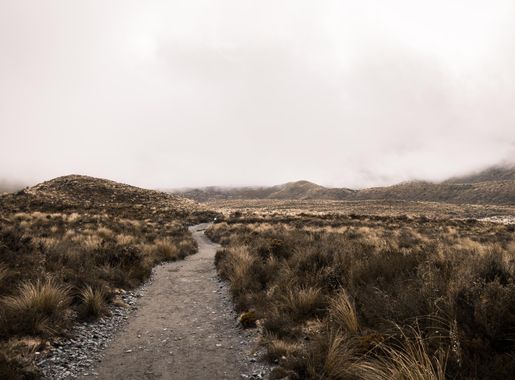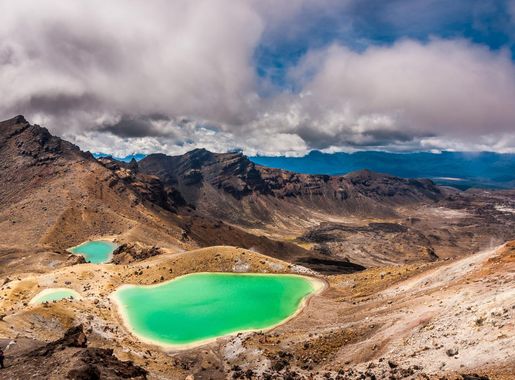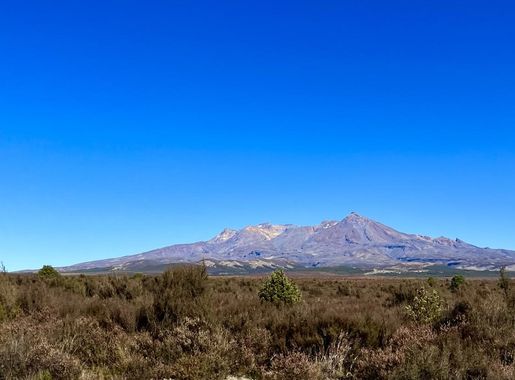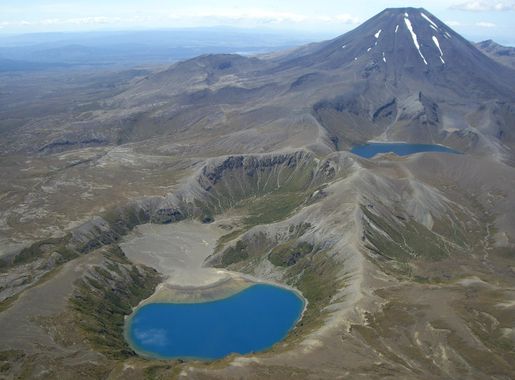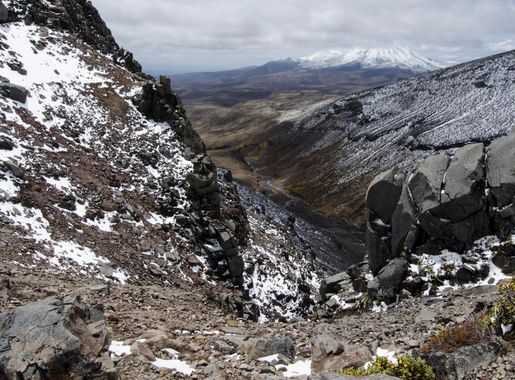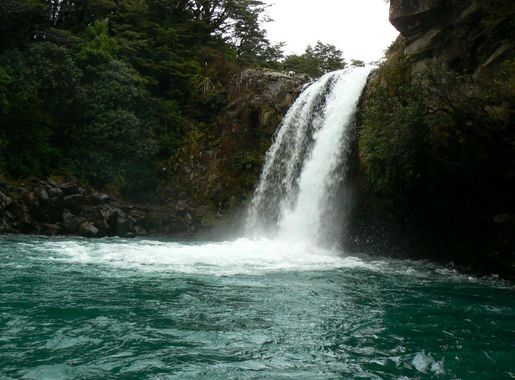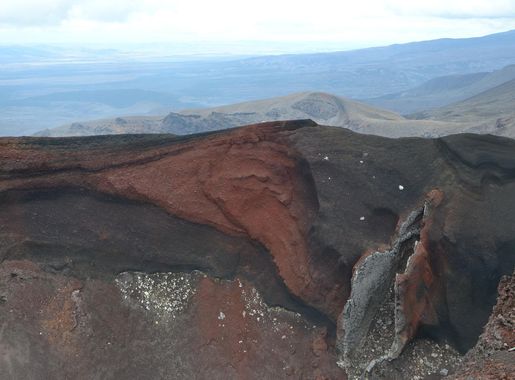
Tongariro National Park: A Land of Volcanic Wonders and Pristine Wilderness
Explore Tongariro National Park, New Zealand's oldest national park and a dual UNESCO World Heritage Site, offering stunning hikes, volcanic landscapes, and rich Māori culture.
Nestled in the heart of New Zealand's North Island, Tongariro National Park is a UNESCO World Heritage Site renowned for its dramatic landscapes and cultural significance. The park is home to three active volcanoes: Tongariro, Ngauruhoe, and Ruapehu, each offering unique vistas and hiking opportunities. The Tongariro Alpine Crossing is one of the most popular hikes, attracting adventurers from around the globe. This 19.4 km trek takes you through diverse terrains, from lush forests and serene lakes to rugged volcanic craters and steaming vents. In addition to its natural beauty, Tongariro National Park holds deep cultural meaning for the Māori people. The park is the spiritual home of the Ngāti Tūwharetoa iwi, and many of its features are named after Māori legends and deities. Visitors can learn about the rich history and traditions of the Māori through guided tours and interpretive centers. For skiers and snowboarders, Mount Ruapehu offers some of the best slopes in New Zealand during the winter months. The Whakapapa and Turoa ski fields provide a variety of runs for all skill levels, along with breathtaking views of the surrounding landscape. In the summer, the park transforms into a haven for hikers, climbers, and nature enthusiasts. Whether you seek adventure or tranquility, Tongariro National Park promises an unforgettable experience.
Local tips in Tongariro National Park
- Start your Tongariro Alpine Crossing hike early in the morning to avoid crowds and to give yourself ample time to complete the trek.
- Weather can change rapidly in the park, so pack layers and waterproof gear even if the forecast looks clear.
- Respect the cultural significance of the area by not climbing Mount Ngauruhoe, which is sacred to the Māori people.
- Visit the Whakapapa Visitor Centre for maps, weather updates, and information on guided tours and activities.
- If you're visiting in winter, check the snow conditions and road closures before heading to the ski fields.
Tongariro National Park: A Land of Volcanic Wonders and Pristine Wilderness
Nestled in the heart of New Zealand's North Island, Tongariro National Park is a UNESCO World Heritage Site renowned for its dramatic landscapes and cultural significance. The park is home to three active volcanoes: Tongariro, Ngauruhoe, and Ruapehu, each offering unique vistas and hiking opportunities. The Tongariro Alpine Crossing is one of the most popular hikes, attracting adventurers from around the globe. This 19.4 km trek takes you through diverse terrains, from lush forests and serene lakes to rugged volcanic craters and steaming vents. In addition to its natural beauty, Tongariro National Park holds deep cultural meaning for the Māori people. The park is the spiritual home of the Ngāti Tūwharetoa iwi, and many of its features are named after Māori legends and deities. Visitors can learn about the rich history and traditions of the Māori through guided tours and interpretive centers. For skiers and snowboarders, Mount Ruapehu offers some of the best slopes in New Zealand during the winter months. The Whakapapa and Turoa ski fields provide a variety of runs for all skill levels, along with breathtaking views of the surrounding landscape. In the summer, the park transforms into a haven for hikers, climbers, and nature enthusiasts. Whether you seek adventure or tranquility, Tongariro National Park promises an unforgettable experience.
When is the best time to go to Tongariro National Park?
Iconic landmarks you can’t miss
Whakapapa
Discover Whakapapa, New Zealand's enchanting ski resort, where exhilarating slopes meet breathtaking alpine views for an unforgettable winter escape.
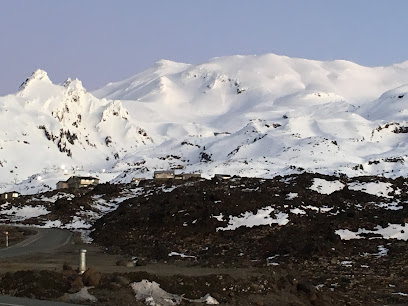
Chateau Tongariro Hotel
Discover the enchanting Chateau Tongariro Hotel, a historic gem nestled at the foot of Mount Ruapehu, offering luxury and adventure in stunning surroundings.
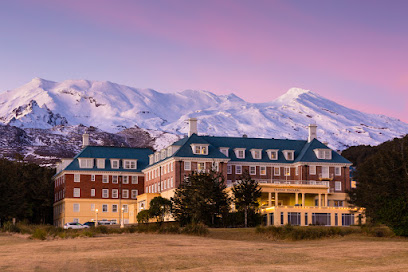
Ohakune Carrot Adventure Park
Discover the whimsical world of Ohakune Carrot Adventure Park, where adventure meets family fun in the heart of New Zealand's stunning landscapes.
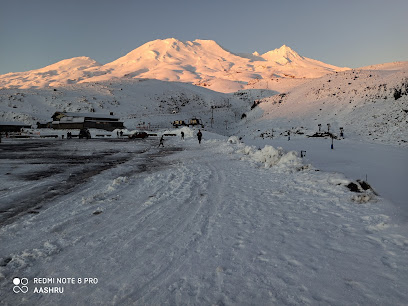
Tawhai Falls (Gollums Pool)
Explore the breathtaking Tawhai Falls, a must-visit attraction in Tongariro National Park, known for its stunning beauty and cinematic history.
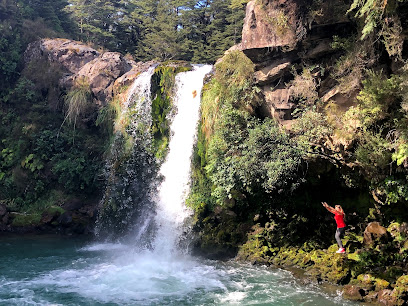
Tongariro North Domain
Explore the lush landscapes and vibrant flora of Tongariro North Domain, a tranquil city park in Taupō, offering stunning views and recreational activities.
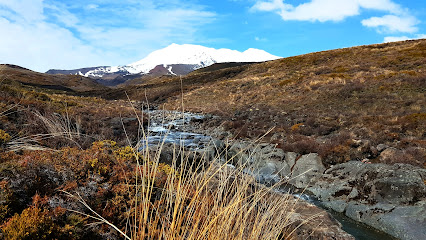
Tongariro National Park Visitor Centre
Explore Tongariro National Park Visitor Centre - Your gateway to breathtaking landscapes, rich culture, and unforgettable adventures in New Zealand.
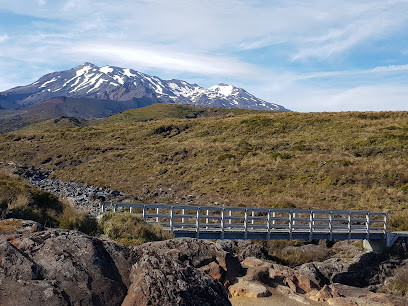
Sky Waka gondola
Discover the breathtaking views and alpine adventures at Sky Waka Gondola in New Zealand's stunning Manawatū-Whanganui region.
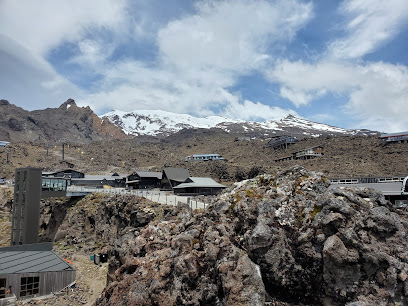
Taranaki Falls
Experience the breathtaking beauty of Taranaki Falls in Tongariro National Park, New Zealand's stunning natural gem surrounded by majestic landscapes.
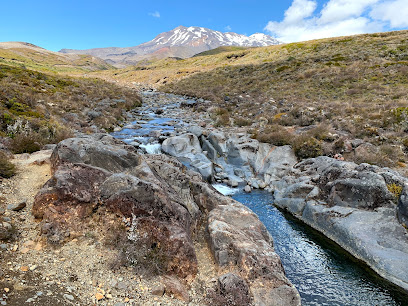
Tongariro Crossing Emerald Lake Lookout
Experience the stunning beauty of the Emerald Lake Lookout in Tongariro National Park, a must-see destination for nature lovers and adventure seekers.
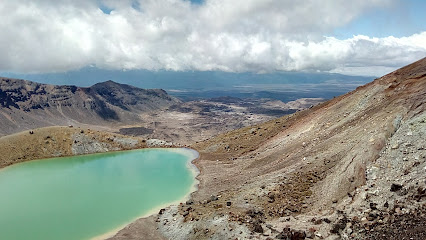
Finish Tongariro Alpine Crossing Trail - Ketetahi side
Experience the breathtaking beauty of New Zealand's Tongariro Alpine Crossing, a premier hiking trail through stunning volcanic landscapes and emerald lakes.
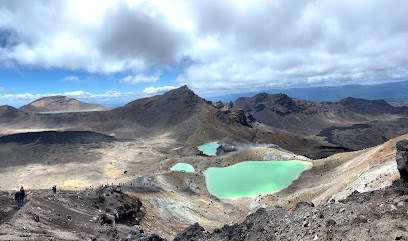
Mangawhero Falls - Gollum's Pool & Ithilien
Explore Mangawhero Falls, a stunning natural attraction in Tongariro National Park, renowned for its beauty and 'Lord of the Rings' connections.
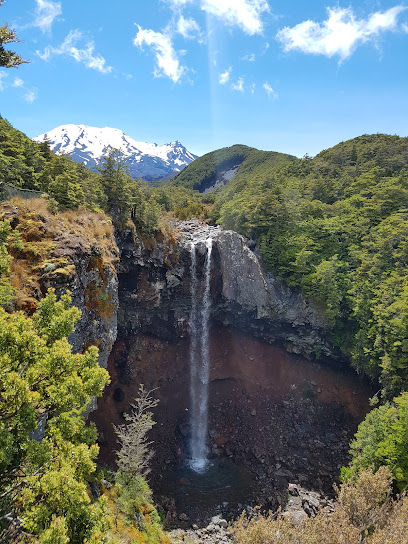
Tongariro Alpine Crossing - Mangatepopo Car Park
Experience the breathtaking Tongariro Alpine Crossing from Mangatepopo Car Park, a must-visit destination for adventure seekers and nature lovers in New Zealand.
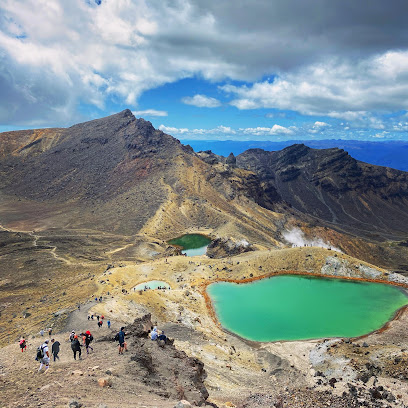
Tongariro Alpine Crossing
Discover the breathtaking landscapes of Tongariro Alpine Crossing, a premier hiking destination in New Zealand's stunning national park.
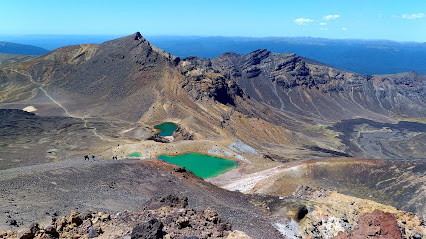
Tongariro National Trout Centre
Explore the Tongariro National Trout Centre: a unique blend of education and outdoor adventure in New Zealand's stunning natural landscape.
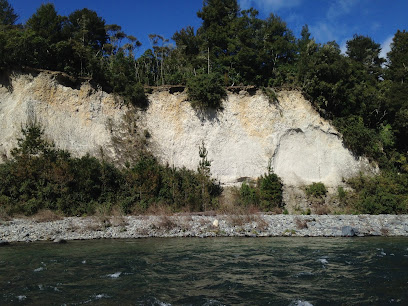
Tongariro Lodge
Discover the perfect blend of adventure and luxury at Tongariro Lodge, a premier destination in New Zealand's stunning natural landscape.
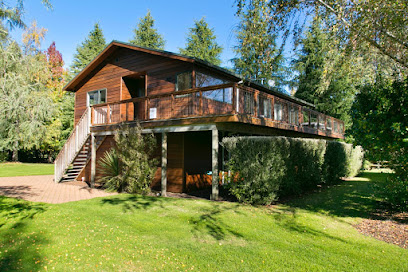
Unmissable attractions to see
Sky Waka gondola
Discover the exhilarating Sky Waka Gondola, where breathtaking views and thrilling adventures await in Manawatū-Whanganui, New Zealand.
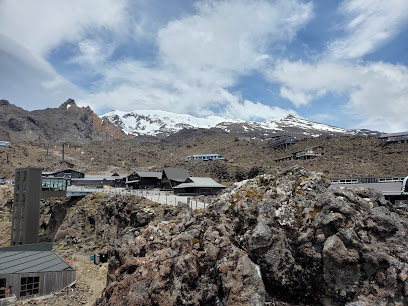
Mangawhero Falls - Gollum's Pool & Ithilien
Explore the breathtaking Mangawhero Falls, a stunning natural wonder in Tongariro National Park, perfect for relaxation and adventure in New Zealand.

TCB Ski Board & Bike
Discover the thrill of adventure at TCB Ski Board & Bike in Ohakune - your one-stop shop for skiing, snowboarding, and biking gear!
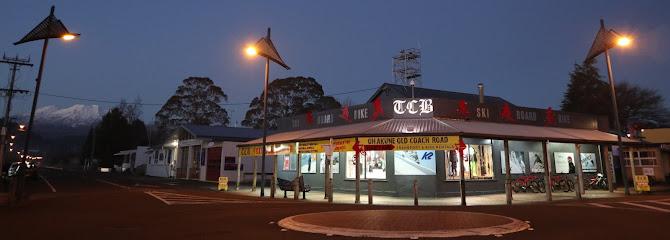
Tongariro Alpine Crossing
Discover the stunning landscapes and rich biodiversity at Tongariro Alpine Crossing, New Zealand's premier hiking destination and a UNESCO World Heritage Site.
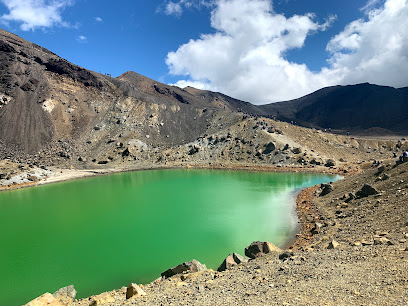
Tongariro National Trout Centre
Discover the beauty of trout conservation at Tongariro National Trout Centre, a must-visit destination in New Zealand's breathtaking landscapes.
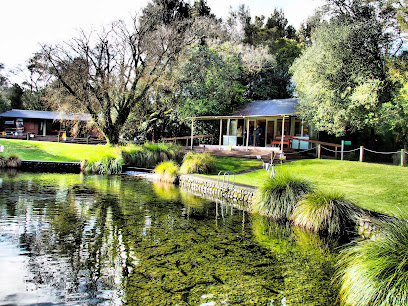
Waitonga Falls Walk Trailhead
Experience the breathtaking beauty of Waitonga Falls Walk in Tongariro National Park, a must-visit for nature lovers and hiking enthusiasts.

Lake Rotopounamu track
Discover the breathtaking landscapes and diverse wildlife along the scenic Lake Rotopounamu Track in Tongariro National Park.
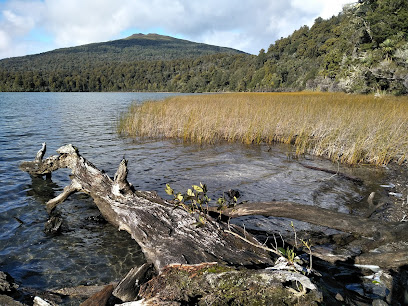
Hapuawhenua Viaduct
Discover the stunning Hapuawhenua Viaduct in Tongariro National Park, where breathtaking views and rich railway history converge in a natural paradise.

Lower Tama Lake
Discover the captivating beauty of Lower Tama Lake, a serene escape nestled in Tongariro National Park, rich in wildlife and breathtaking landscapes.
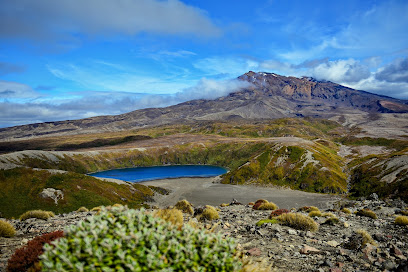
Ketetahi Falls
Explore the enchanting Ketetahi Falls on the Tongariro Alpine Crossing - a breathtaking waterfall surrounded by stunning New Zealand landscapes.
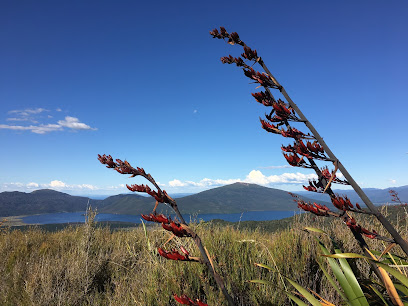
Whakapapa Nature Walk
Explore the breathtaking landscapes of the Whakapapa Nature Walk in New Zealand's Ruapehu District, where nature and culture intertwine.
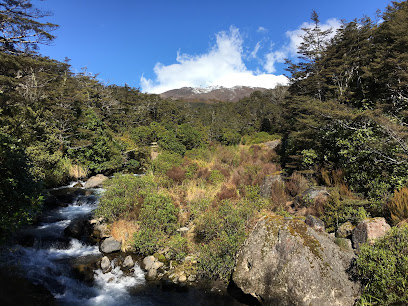
Soda Springs
Explore Soda Springs in Tongariro Alpine Crossing, a breathtaking natural attraction with geothermal wonders and stunning hiking trails in New Zealand.
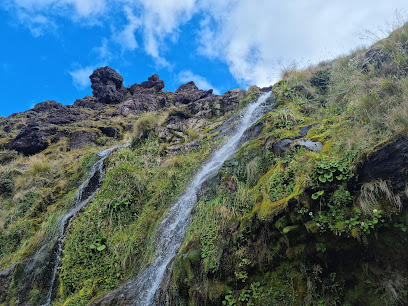
Te Porere Redoubt
Discover the historic Te Porere Redoubt in Tongariro, a significant site of New Zealand's military heritage surrounded by stunning landscapes.
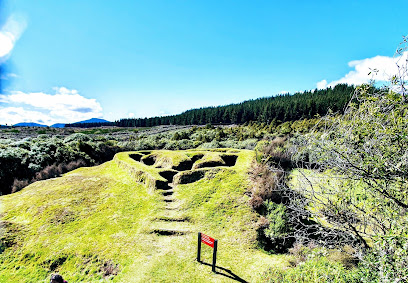
Ridge Walking Track
Discover the breathtaking landscapes and rich cultural heritage along the Ridge Walking Track in Tongariro National Park, New Zealand.
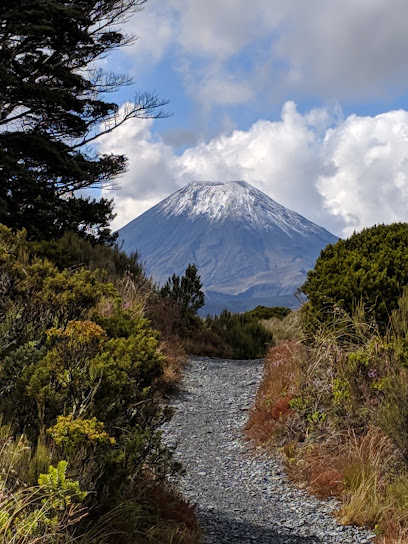
Tawhai Falls Walk
Experience the breathtaking beauty of Tawhai Falls Walk, a serene hiking trail in the Ruapehu District, perfect for nature lovers and adventure seekers.
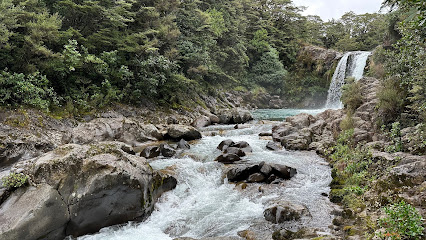
Essential places to dine
Schnapps Bar
Discover Schnapps Bar in National Park - where delicious food meets friendly service amidst stunning scenery.

Osteria Ohakune
Experience authentic Italian cuisine at Osteria Ohakune, where fresh ingredients meet traditional recipes in a cozy atmosphere.
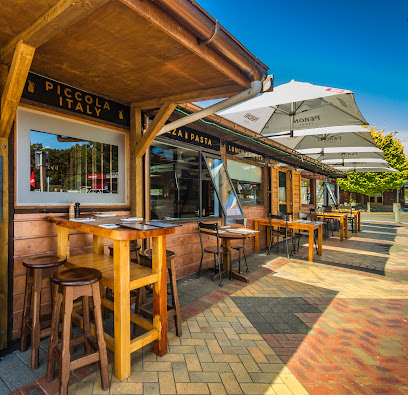
Hydro Eatery
Discover Hydro Eatery in Tūrangi: A delightful cafe specializing in breakfast and lunch with local flavors and warm hospitality.
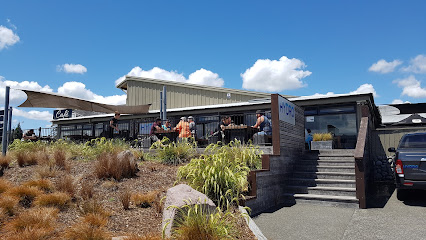
Burger King Tūrangi
Experience the flavors of fast food at Burger King Tūrangi – your go-to spot for delicious burgers and quick bites in New Zealand.
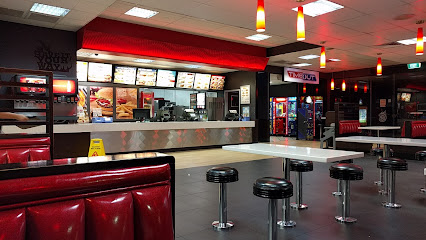
The Cyprus Tree Restaurant & Bar Ohakune
Discover the flavors of New Zealand at The Cyprus Tree Restaurant & Bar, where family-friendly dining meets cozy ambiance in Ohakune.
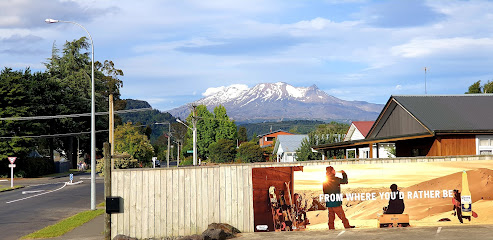
The Park Hotel Ruapehu
Experience the perfect blend of comfort and culinary delight at The Park Hotel Ruapehu, nestled in the heart of New Zealand's stunning National Park.

Powderkeg Restaurant and Bar
Discover the vibrant flavors and lively atmosphere at Powderkeg Restaurant and Bar in Ohakune – where great food meets unforgettable experiences.
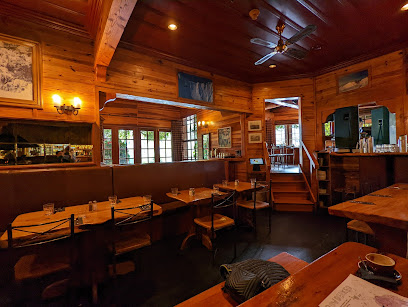
Time For Food Cafe
Experience the best of New Zealand's flavors at Time For Food Cafe in Tūrangi – where delicious meets delightful!
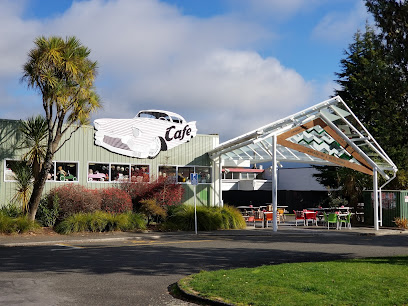
Lakeland House Restaurant
Experience culinary excellence at Lakeland House Restaurant in Tūrangi – where local flavors meet warm hospitality.
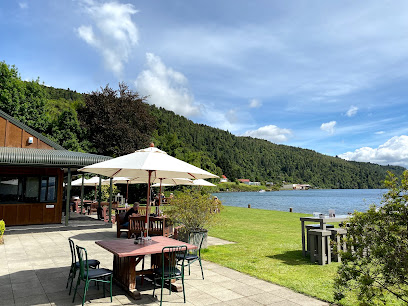
Hare & Copper Eatery | Tūrangi Restaurant
Experience delightful dining at Hare & Copper Eatery in Tūrangi - a must-visit restaurant for every traveler seeking local flavors.

CamoKai Takeaways
Discover CamoKai Takeaways in National Park for an authentic taste of New Zealand's finest fish and chips along with delightful desserts.
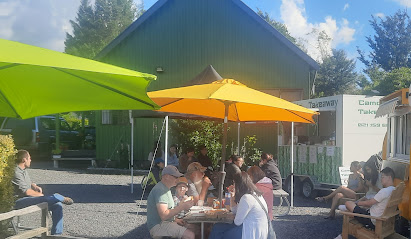
Tongariro Lodge
Discover Tongariro Lodge: A Luxurious Retreat Blending Fine Dining with Adventure Amidst Stunning Natural Beauty.
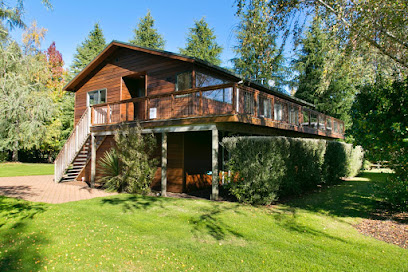
Tiger Palace
Experience authentic Asian cuisine at Tiger Palace in Ohakune – where rich flavors meet warm hospitality in every dish.
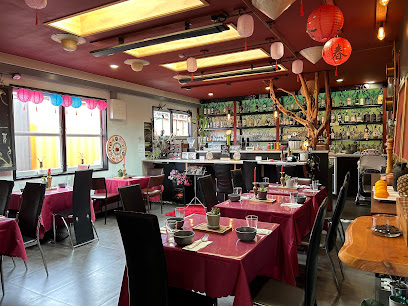
Spiral Restaurant @ The Park
Experience exceptional New Zealand cuisine at Spiral Restaurant in National Park - where every meal is complemented by stunning natural views.
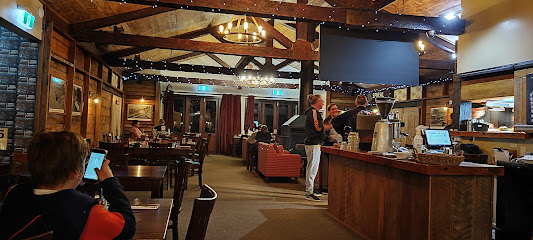
Valentino's Italian Restaurant
Experience authentic Italian cuisine at Valentino's Restaurant in Tūrangi - where every dish tells a story of Italy.
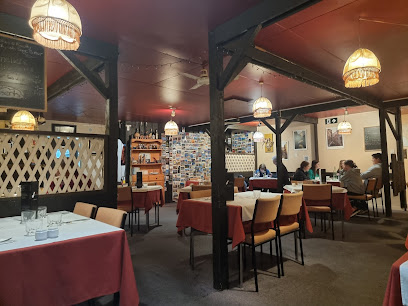
Markets, malls and hidden boutiques
New World Turangi
Discover fresh local produce and unique NZ specialties at New World Turangi, your go-to supermarket in Tūrangi.
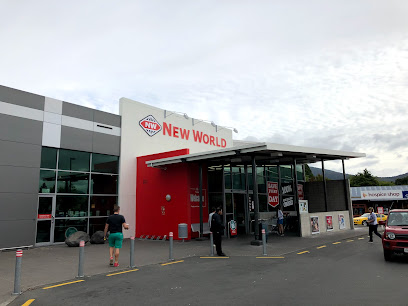
Tongariro Crossing Emerald Lake Lookout
Explore the stunning Emerald Lake Lookout in Tongariro National Park, a scenic spot with breathtaking views of turquoise waters and volcanic landscapes.
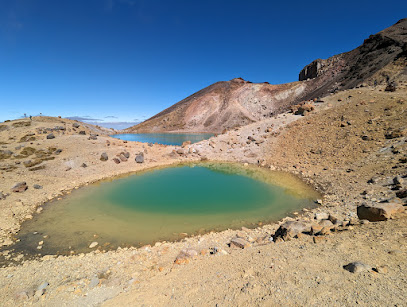
Four Square National Park
Discover fresh local produce and friendly service at Four Square National Park, your go-to grocery stop in the heart of New Zealand's adventure playground.

Tongariro Alpine Crossing
Explore the stunning Tongariro Alpine Crossing, a must-visit hiking destination in New Zealand's breathtaking national park, featuring volcanic landscapes and emerald lakes.
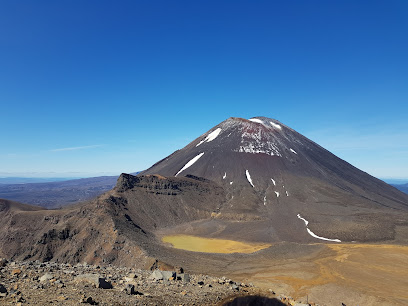
GAS National Park
GAS National Park: Your essential fuel and grocery stop in the heart of New Zealand's outdoor adventure playground.
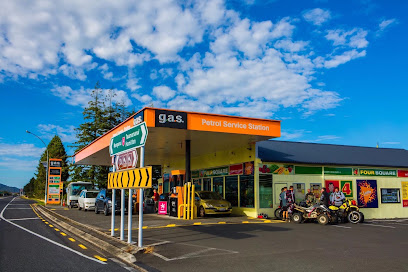
Ski Biz @ The Alpine Centre
Discover the ultimate ski and snowboard adventure at Ski Biz @ The Alpine Centre, your premier rental service in National Park, New Zealand.
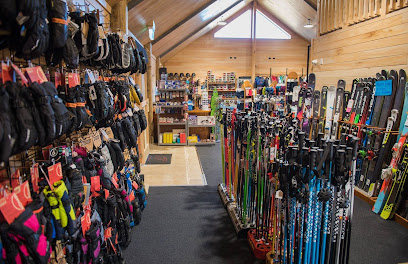
Opus Fresh HQ
Discover stylish boutique merino clothing at Opus Fresh HQ in Ohakune, offering a cozy shopping experience with friendly service and fresh coffee.
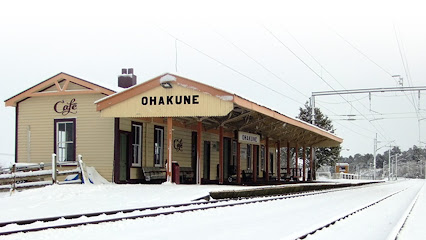
Liquor Centre
Explore a diverse selection of local and international beverages at Turangi's Liquor Centre, your ultimate supermarket destination.
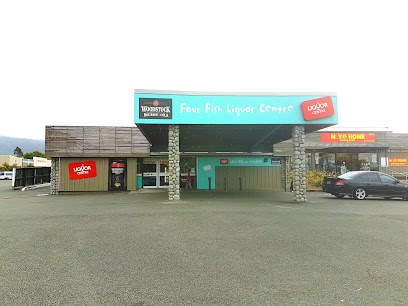
Snowzone @ The Alpine Centre
Discover adventure at Snowzone @ The Alpine Centre, your one-stop-shop for ski rentals, outdoor gear, and expert advice in New Zealand's stunning National Park.
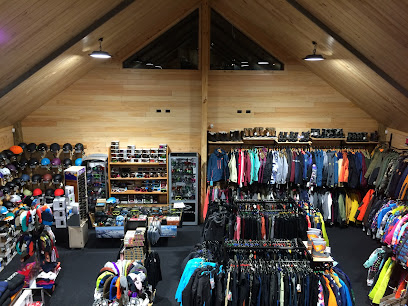
Hospice Shop Turangi
Explore unique second-hand finds and support local hospice services at Hospice Shop Turangi, your treasure hunt in Tūrangi, New Zealand.
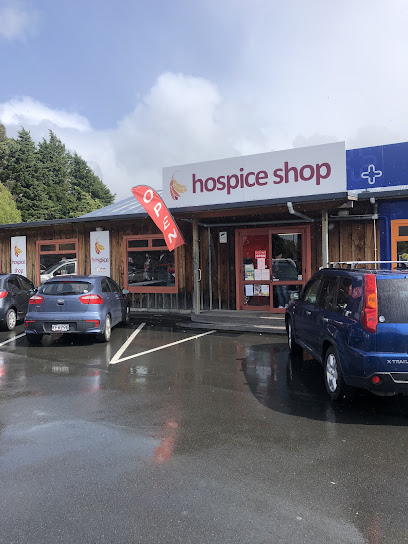
Edge to Edge
Discover Edge to Edge, your ultimate ski rental service in New Zealand, offering top-quality gear and expert advice for an unforgettable snow adventure.
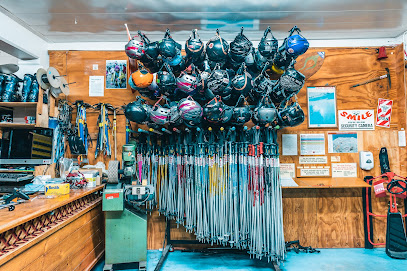
Mounds walk at Tongariro National Park
Explore the Mounds Walk at Tongariro National Park, a scenic trail rich in natural beauty and cultural history, perfect for all outdoor enthusiasts.
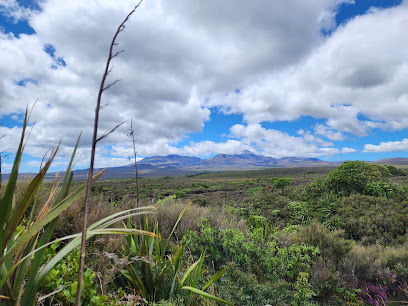
Central Plateau Cycles Turangi
Discover the beauty of New Zealand's Central Plateau with quality bike rentals at Central Plateau Cycles in Tūrangi.
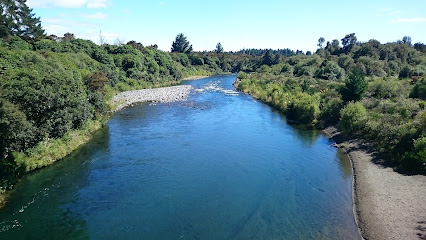
MA & MELS
Discover MA & MELS in National Park – a delightful restaurant offering exquisite meals and artisanal coffee in a stunning setting.

Joy's Dairy
Discover Joy's Dairy in National Park for fresh local produce, gourmet snacks, and a warm shopping experience that enhances your travel adventures.
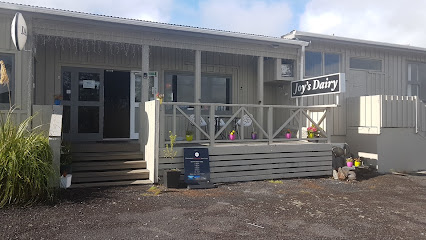
Essential bars & hidden hideouts
Chateau Tongariro Hotel
Experience the elegance of Chateau Tongariro Hotel, a historical gem in the heart of Mt Ruapehu, surrounded by breathtaking alpine scenery.
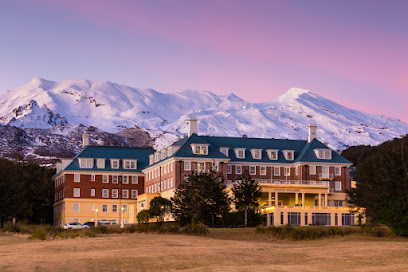
Schnapps Bar
Experience the warmth and charm of Schnapps Bar in National Park, where great drinks and delicious food meet stunning natural beauty.
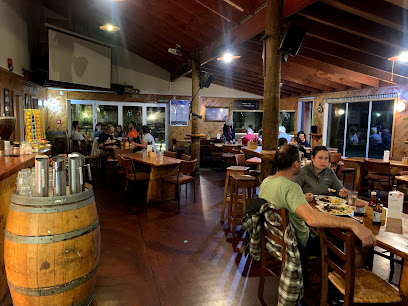
Tongariro Crossing Emerald Lake Lookout
Discover the stunning Emerald Lake Lookout at Tongariro National Park, where vibrant waters and volcanic landscapes await your exploration.
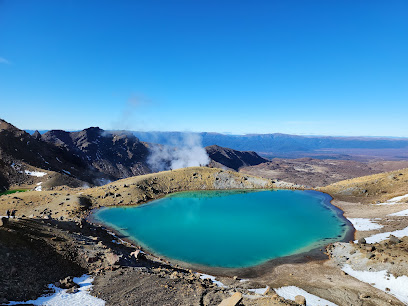
Turangi Tavern
Discover the charm of Turangi Tavern, where great food, drinks, and a welcoming atmosphere await in the heart of Tūrangi, New Zealand.
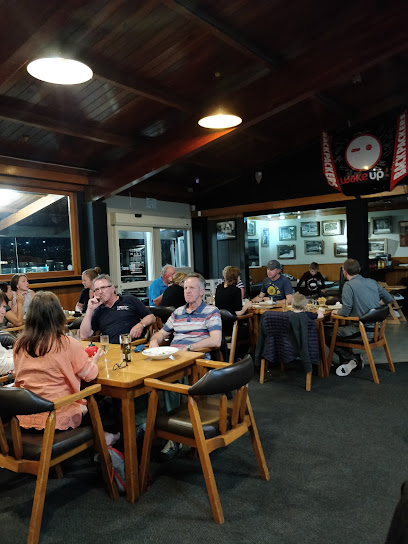
The Park Hotel Ruapehu
Discover the perfect blend of comfort and exquisite dining at The Park Hotel Ruapehu, your gateway to adventure in National Park, New Zealand.

Powderkeg Restaurant and Bar
Explore the vibrant flavors and welcoming atmosphere of Powderkeg Restaurant and Bar in Ohakune, the ultimate dining destination for travelers.
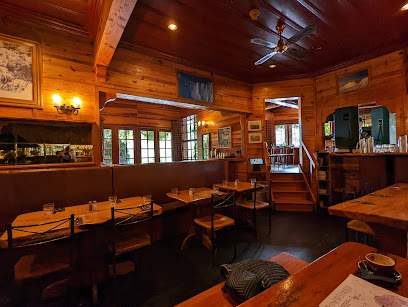
Turangi Bridge Motel, Bar & Restaurant
Discover the perfect blend of comfort and local flavors at Turangi Bridge Motel, Bar & Restaurant in Tūrangi, New Zealand.

Powderhorn Chateau
Discover the perfect blend of adventure and relaxation at Powderhorn Chateau, a premier destination in Ohakune, New Zealand.
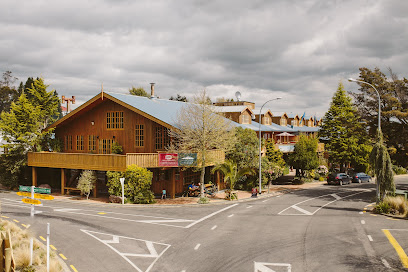
Hare & Copper Eatery | Tūrangi Restaurant
Experience the rich flavors of New Zealand at Hare & Copper Eatery, a top dining destination in Tūrangi for locals and tourists alike.
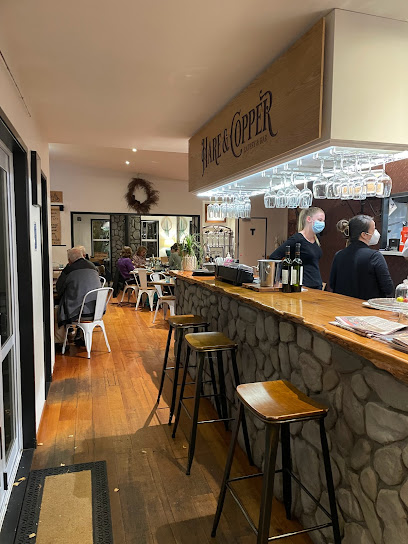
Kings Ohakune - Bar, Restaurant & Events
Discover Kings Ohakune: A vibrant pub and restaurant offering local cuisine, live music entertainment, and a welcoming atmosphere in stunning Ohakune.

Rust Licensed Gourmet Burger Bar
Discover the best gourmet burgers in Tūrangi at Rust Licensed Gourmet Burger Bar, where local flavors meet culinary creativity in a vibrant setting.

Tongariro Lodge
Discover the perfect blend of fine dining and adventure at Tongariro Lodge, set in the stunning landscapes of Tūrangi, New Zealand.
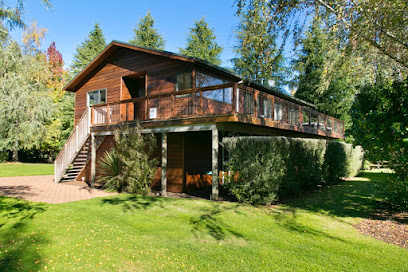
Spiral Restaurant @ The Park
Experience the best of local cuisine at Spiral Restaurant @ The Park, where every dish celebrates the flavors of New Zealand's breathtaking landscapes.
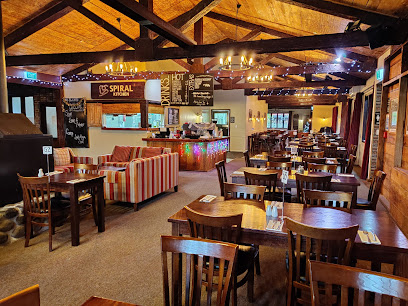
Mt Tongariro
Discover the breathtaking beauty of Mt Tongariro, a volcanic marvel in New Zealand, offering stunning hikes and rich cultural heritage.
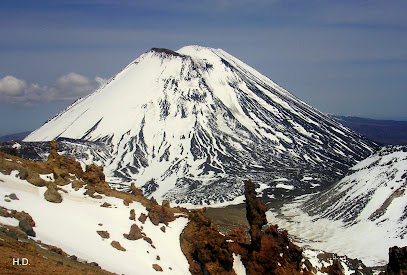
Tussock Bar & Restaurant
Discover the warmth of New Zealand's hospitality at Tussock Bar & Restaurant, where local flavors meet a welcoming atmosphere.
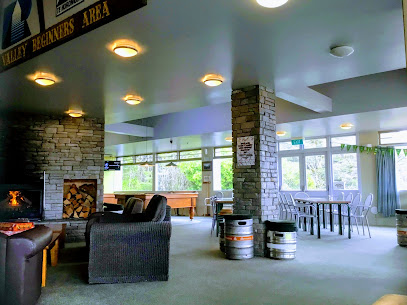
Local Phrases about Tongariro National Park
-
- HelloKia ora
[kee-ah o-rah] - GoodbyeHaere rā
[high-ree rah] - YesĀe
[eye] - NoKāo
[ka-oh] - Please/You're welcomeTēnā koe
[teh-nah koh-eh] - Thank youWhakawhetai koe
[fah-kah-feh-tie koh-eh] - Excuse me/SorryWhakama koe
[fah-kah-mah koh-eh] - How are you?Kei te pēhea koe?
[keh-ee teh pay-hay-ah koh-eh] - Fine. And you?Kei te pai. Ā, koe?
[keh-ee teh pie. eye, koh-eh] - Do you speak English?Kōrero koe i te reo Pākehā?
[koh-reh-roh koh-eh ee teh reh-oh pah-keh-ha] - I don't understandKāore au i te māramatanga
[ka-oh-reh oh ee teh mah-rah-mah-tah-ngah]
- HelloKia ora
-
- I'd like to see the menu, pleaseMe āwhina ahau ki te titiro i te pānui, tēnā
[meh aah-feen-ah ah-high kee teh tee-tee-roh ee teh pah-noo-ee, teh-nah] - I don't eat meatKāore au e kai kau
[ka-oh-reh oh eh kai kow] - Cheers!Ārahi!
[eye-rah-hee] - I would like to pay, pleaseMe āwhina ahau ki te utu, tēnā
[meh aah-feen-ah ah-high kee teh oo-too, teh-nah]
- I'd like to see the menu, pleaseMe āwhina ahau ki te titiro i te pānui, tēnā
-
- Help!Āwhina!
[ah-feen-ah] - Go away!Haere atu!
[high-ree ah-too] - Call the Police!Karangatia te Pirihimana!
[kah-rah-ngah-tee-ah teh pee-ree-hee-mah-nah] - Call a doctor!Karangatia tētahi rata!
[kah-rah-ngah-tee-ah teh-tah-hee rah-tah] - I'm lostI wareware au
[ee wah-reh-wah-reh oh] - I'm illKua mate au
[koo-ah mah-teh oh]
- Help!Āwhina!
-
- I'd like to buy...Me āwhina ahau ki te hoko...
[meh aah-feen-ah ah-high kee teh hoh-koh] - I'm just lookingKo te titiro anake ahau
[koh teh tee-tee-roh ah-nah-keh ah-high] - How much is it?He aha te utu?
[heh ah-hah teh oo-too] - That's too expensiveHe nui rawa te utu
[heh noo-ee rah-wah teh oo-too] - Can you lower the price?Me koe e whakaiti i te utu?
[meh koh-eh eh fah-kai-tee ee teh oo-too]
- I'd like to buy...Me āwhina ahau ki te hoko...
-
- What time is it?He aha te wā?
[heh ah-hah teh wah] - It's one o'clockKotahi noa iho
[koh-tah-hee noh-ah ee-hoh] - Half past (10)Tekau mā rua
[teh-kow mah roo-ah] - MorningAta
[ah-tah] - AfternoonAhiahi
[ah-hee-ah-hee] - EveningPō
[poh] - YesterdayInānei
[ee-nah-nay] - TodayTēnei rā
[teh-nay rah] - TomorrowĀpōpō
[ah-poh-poh] - 1Tahi
[tah-hee] - 2Rua
[roo-ah] - 3Toru
[toh-roo] - 4Whā
[fah] - 5Rima
[ree-mah] - 6Ono
[oh-noh] - 7Whitu
[fee-too] - 8Waru
[wah-roo] - 9Iwa
[ee-wah] - 10Tekau
[teh-kow]
- What time is it?He aha te wā?
-
- Where's a/the...?Kei hea te...?
[keh-ee heh-ah teh] - What's the address?Ko wai te wāhitau?
[koh wah-ee teh wah-hee-tow] - Can you show me (on the map)?Me koe e whakaatu i ahau (i te mahere)?
[meh koh-eh eh fah-kah-ah-too ee ah-high (ee teh mah-heh-reh)] - When's the next (bus)?Āhea te nā te mutunga atu (auta)?
[ah-heh-ah teh nah teh moo-toong-ah ah-too (ow-tah)] - A ticket (to ....)He tiki (ki ....)
[heh tee-kee (kee)]
- Where's a/the...?Kei hea te...?
History of Tongariro National Park
-
Tongariro National Park holds profound spiritual significance for the Maori people, particularly the Ngāti Tūwharetoa iwi. The peaks of Tongariro, Ngauruhoe, and Ruapehu are considered sacred, with numerous legends and myths tied to these mountains. According to Maori tradition, these mountains were originally gods who arrived in the central North Island after a great journey from Hawaiki, the ancestral homeland. The mountains are seen as embodying the presence of their ancestors and are revered in Maori culture.
-
In 1887, the paramount chief of the Ngāti Tūwharetoa, Te Heuheu Tukino IV (Horonuku), made a landmark decision to gift the peaks of Tongariro, Ngauruhoe, and part of Ruapehu to the Crown. This act was driven by a desire to protect the land from European settlers and ensure its preservation for future generations. This generous and unprecedented gift led to the establishment of Tongariro National Park, making it the first national park in New Zealand and one of the earliest in the world.
-
Following the gift of the sacred peaks by Te Heuheu Tukino IV, legislative actions were taken to formally create Tongariro National Park. In 1894, the Tongariro National Park Act was passed, officially designating the area as protected land. The early years of the park were focused on setting boundaries, managing visitors, and preserving the natural and cultural heritage. The park initially covered a modest area but has since expanded to encompass over 79,000 hectares.
-
Tongariro National Park is renowned for its dramatic volcanic landscape, characterized by active and dormant volcanoes. Mount Ruapehu, one of the park's prominent features, has erupted multiple times in recorded history, including significant eruptions in 1945, 1995, and 1996. The park's volcanic activity has continually shaped the environment, creating a unique and dynamic landscape of craters, lava flows, and geothermal features. These natural forces contribute to the park's scientific and ecological significance.
-
In 1990, Tongariro National Park was inscribed as a UNESCO World Heritage Site for its outstanding natural values. This recognition was extended in 1993 to include the park's cultural significance, making it one of the few sites in the world to hold dual World Heritage status. The park's inscription highlights its importance as a place of both natural beauty and cultural heritage, acknowledging the deep connection between the Maori people and the landscape.
-
Tongariro National Park gained international fame as a filming location for Peter Jackson's 'The Lord of the Rings' film trilogy. The dramatic landscapes of Mount Ngauruhoe (Mount Doom in the films) and the surrounding areas were used to depict the fantastical world of Middle-earth. This association has drawn fans and tourists from around the globe, adding a contemporary cultural layer to the park's rich history.
Tongariro National Park Essentials
-
Tongariro National Park is located in the central North Island of New Zealand. The nearest international airport is Auckland Airport, approximately 330 kilometers away. From Auckland, you can rent a car and drive to the park, which takes around 4-5 hours. Alternatively, you can take a domestic flight to Taupo Airport, which is about 100 kilometers from the park, and then use a rental car or shuttle service to reach your destination.
-
Within Tongariro National Park, you can explore using various modes of transportation. Rental cars are a popular choice for flexibility. Shuttle services are available for key hiking trails such as the Tongariro Alpine Crossing. Public buses connect nearby towns like Turangi and National Park Village to the park. Bicycles are another option for getting around, particularly for the more adventurous travelers.
-
The official currency in New Zealand is the New Zealand Dollar (NZD). Credit and debit cards are widely accepted in hotels, restaurants, and shops within and around Tongariro National Park. It's advisable to carry some cash for smaller establishments and parking fees. ATMs are available in nearby towns but may be limited within the park itself.
-
Tongariro National Park is generally a safe destination for tourists. However, it is essential to take standard precautions. Keep an eye on your belongings, especially in crowded areas such as car parks and popular trailheads. There are no specific high-crime areas targeting tourists, but always stay vigilant and aware of your surroundings. It is also crucial to be prepared for changing weather conditions and to inform someone of your hiking plans.
-
In case of emergency, dial 111 for immediate assistance. The park has visitor centers with first aid facilities, and the nearest hospitals are located in Taupo and Taumarunui. It is recommended to have travel insurance that covers medical emergencies and outdoor activities. For minor health issues, there are pharmacies in nearby towns where you can purchase over-the-counter medications.
-
Fashion: Do wear appropriate outdoor clothing and sturdy footwear, especially for hiking. Layers are recommended due to variable weather. Religion: Do respect the sacred sites of the Maori people within the park. Public Transport: Do use shuttle services for popular trails and respect shuttle schedules. Don't expect public transport to be as frequent as in urban areas. Greetings: Do greet people with a friendly 'Kia Ora,' a traditional Maori greeting. Eating & Drinking: Do try local New Zealand cuisine and respect local dining customs. Don't litter; always take your rubbish with you.
-
To experience Tongariro National Park like a local, visit the Whakapapa Visitor Centre for insights on the best trails and hidden gems. Engage with local guides for cultural tours that delve into the Maori heritage of the area. Don't miss the opportunity to hike the Tongariro Alpine Crossing, widely regarded as one of the best one-day hikes in the world. For a unique experience, explore some of the lesser-known trails such as the Tama Lakes Track, offering stunning views without the crowds.
Trending Landmarks in Tongariro National Park
-
Whakapapa
-
Chateau Tongariro Hotel
-
Ohakune Carrot Adventure Park
-
Tawhai Falls (Gollums Pool)
-
Tongariro North Domain
-
Tongariro National Park Visitor Centre
-
Sky Waka gondola
-
Taranaki Falls
-
Tongariro Crossing Emerald Lake Lookout
-
Finish Tongariro Alpine Crossing Trail - Ketetahi side
-
Mangawhero Falls - Gollum's Pool & Ithilien
-
Tongariro Alpine Crossing - Mangatepopo Car Park
-
Tongariro Alpine Crossing
-
Tongariro National Trout Centre
-
Tongariro Lodge


